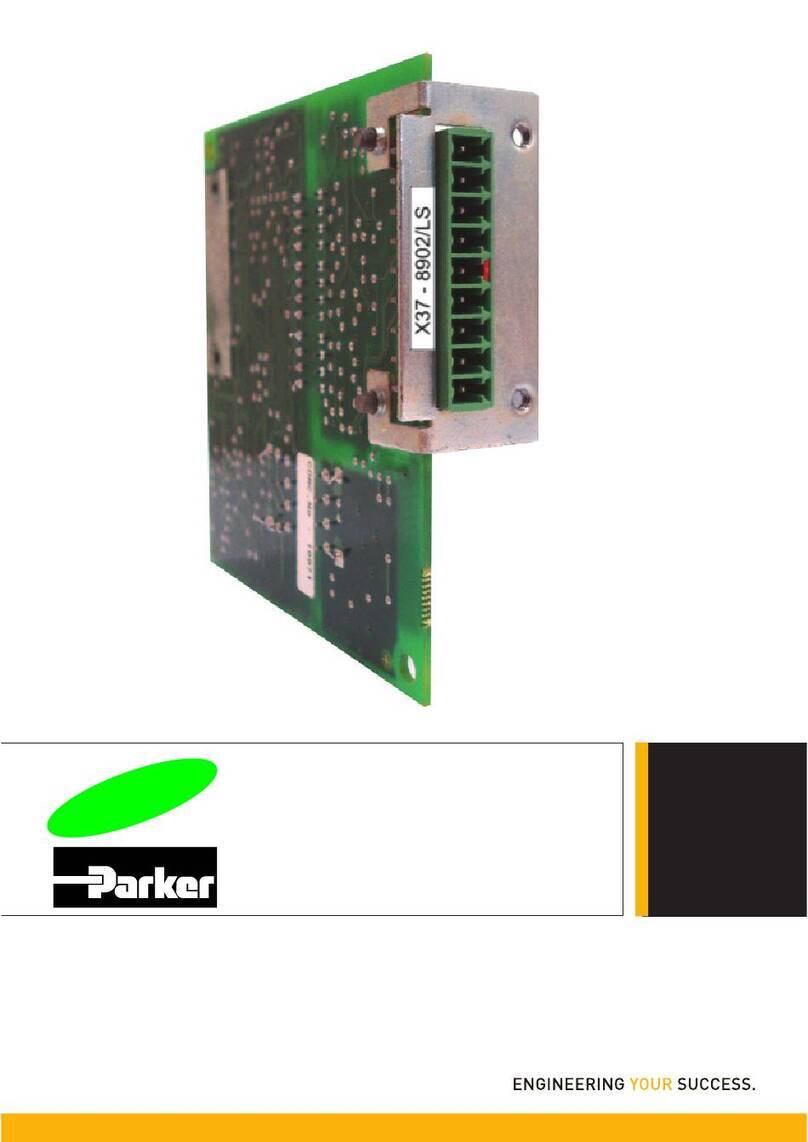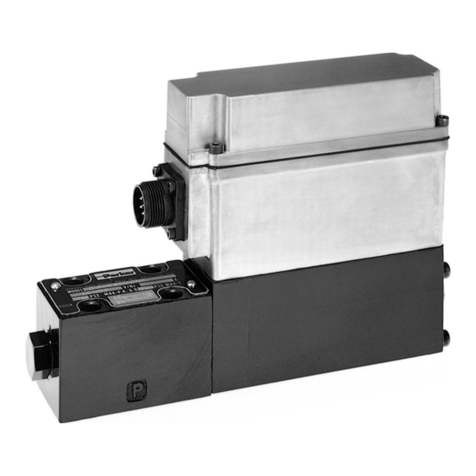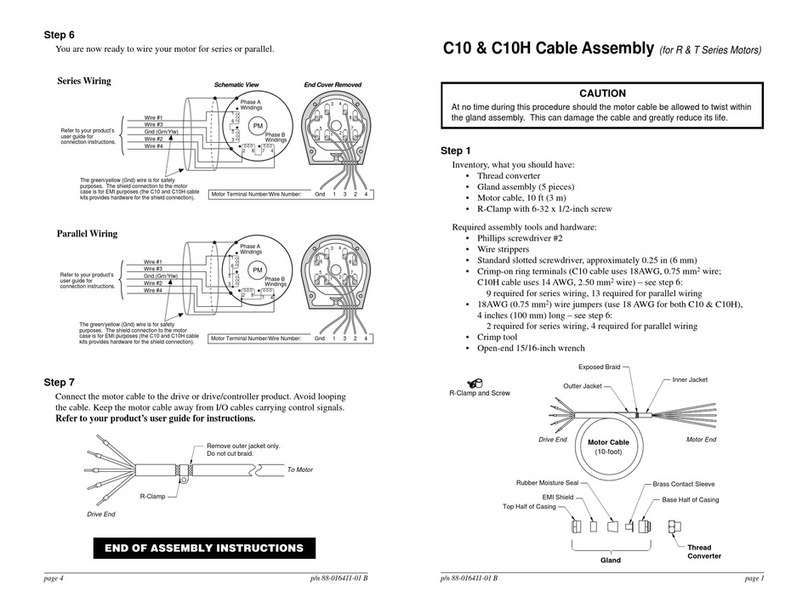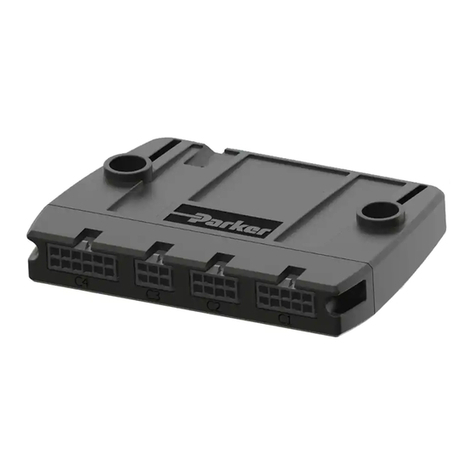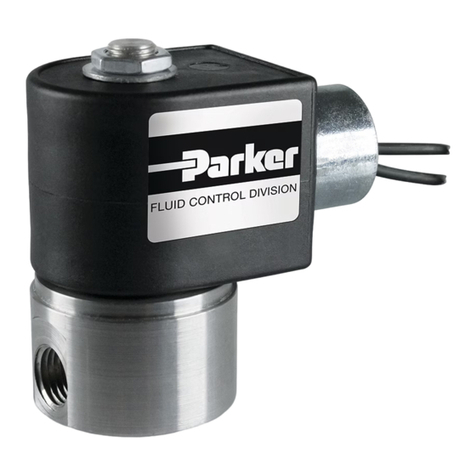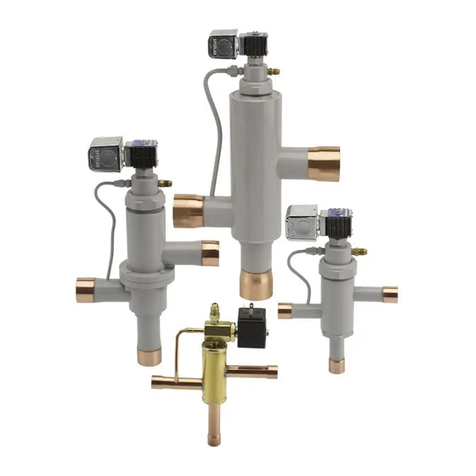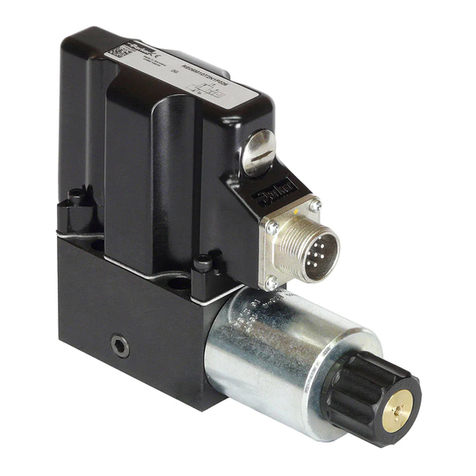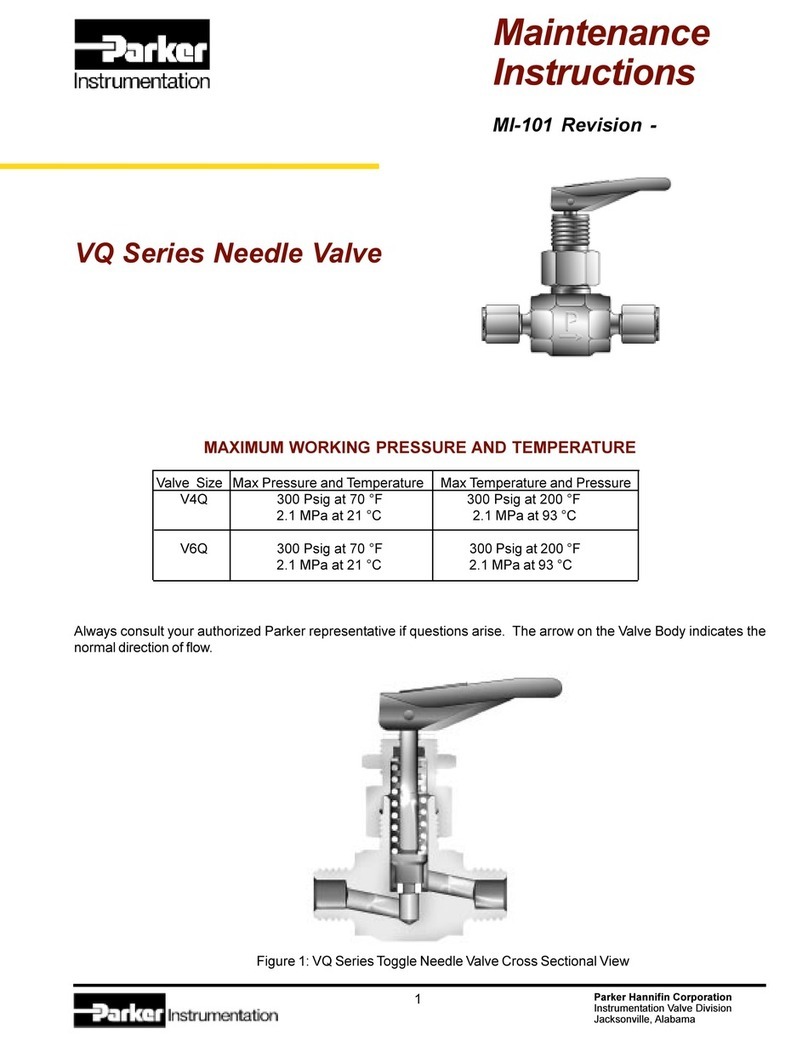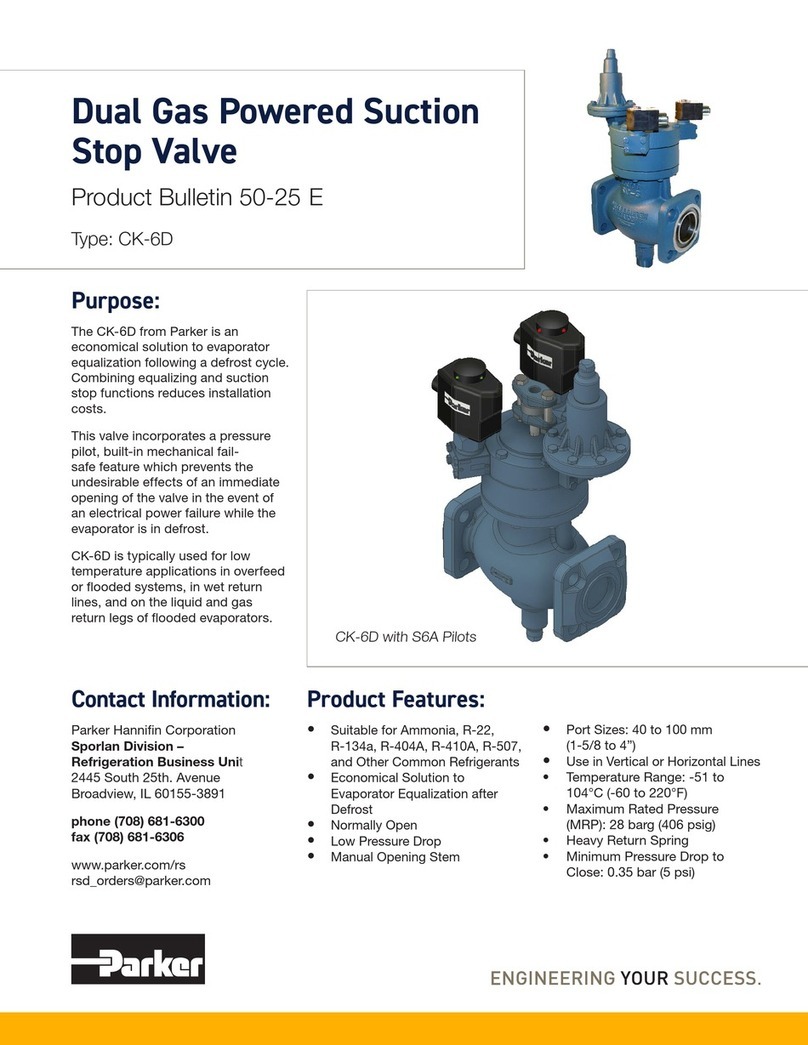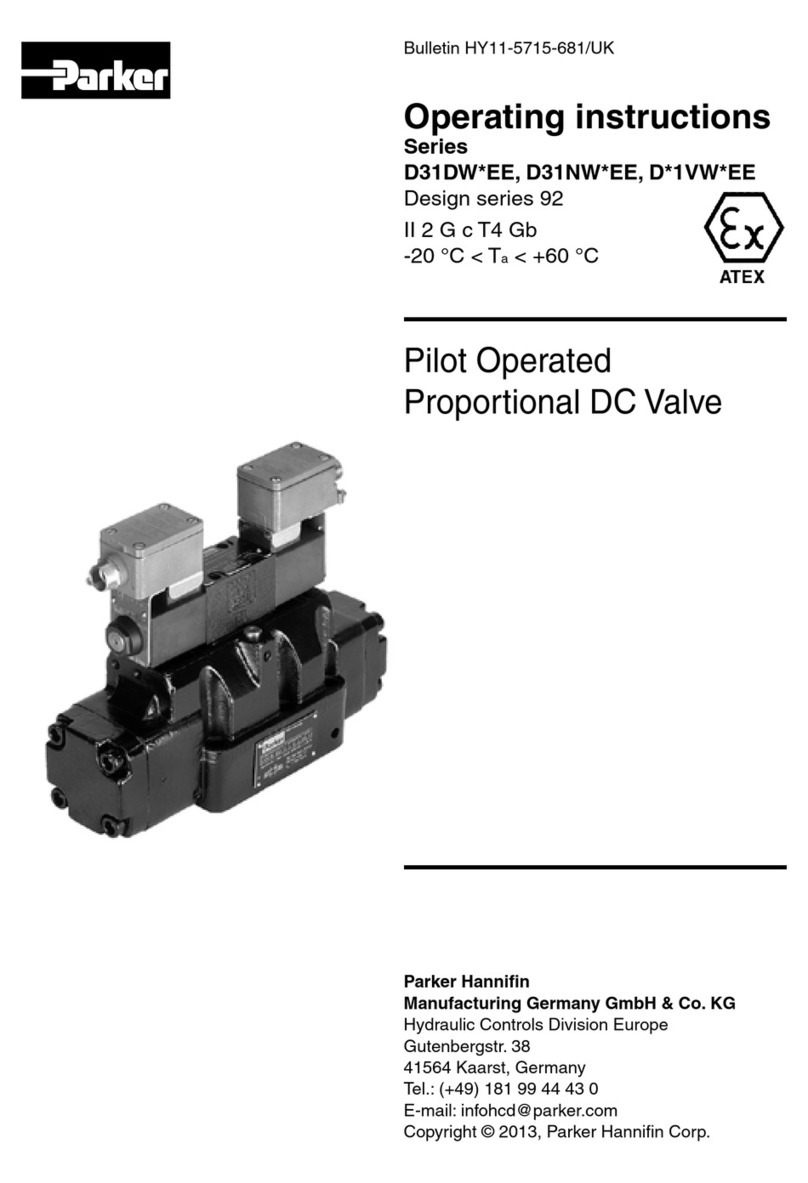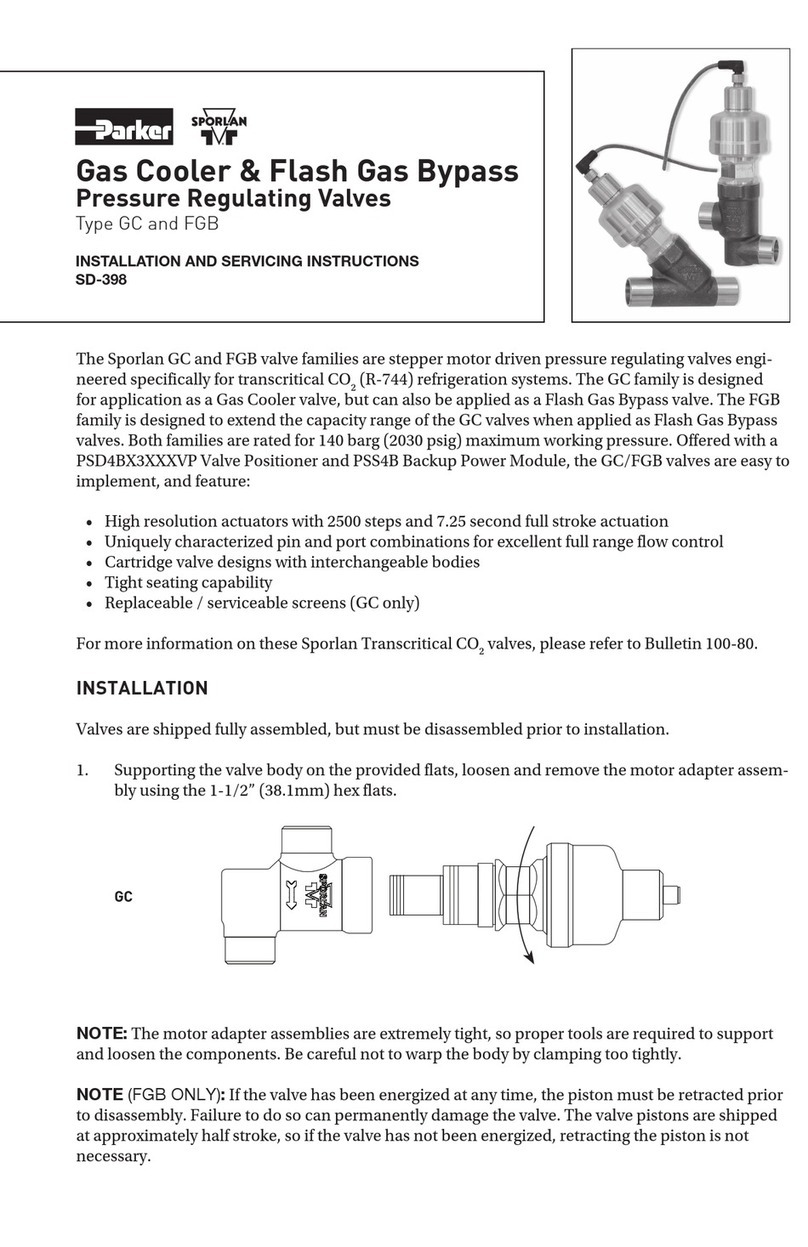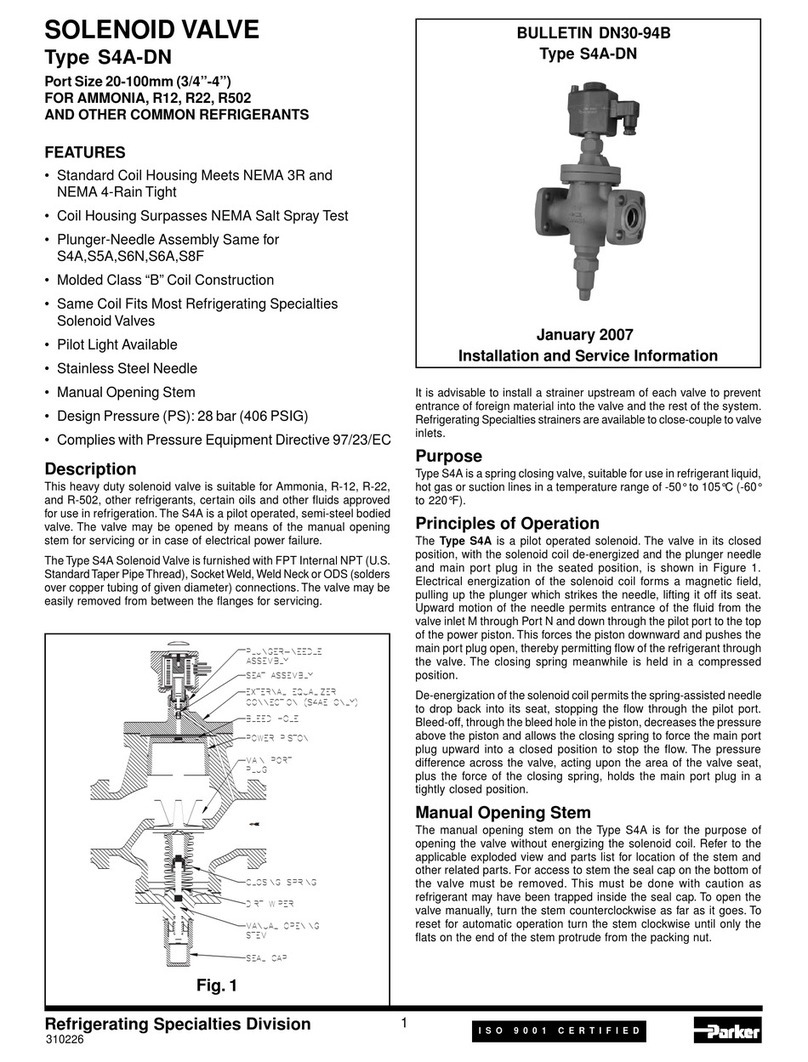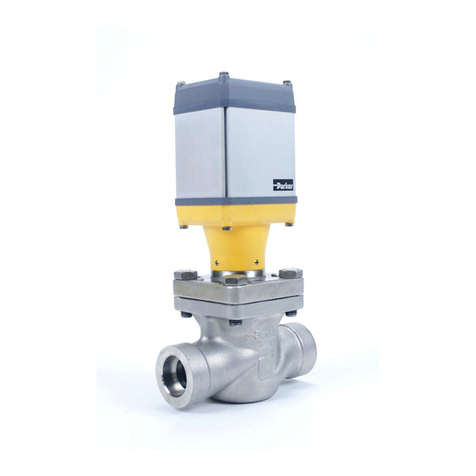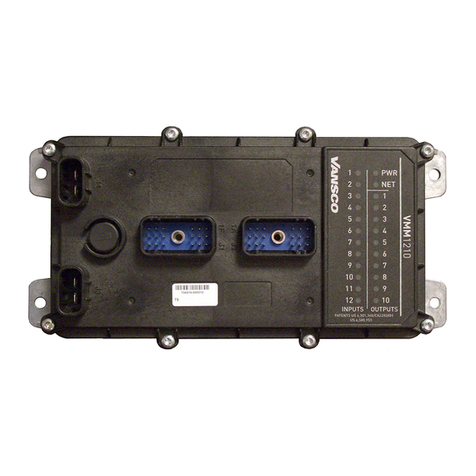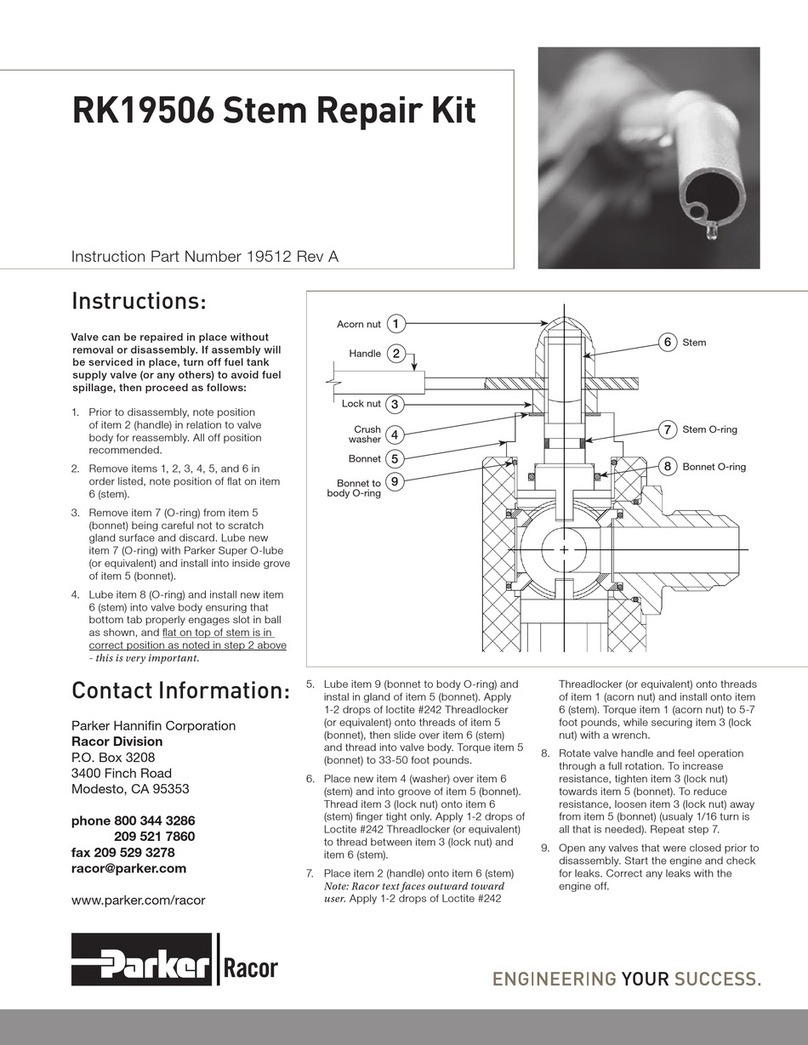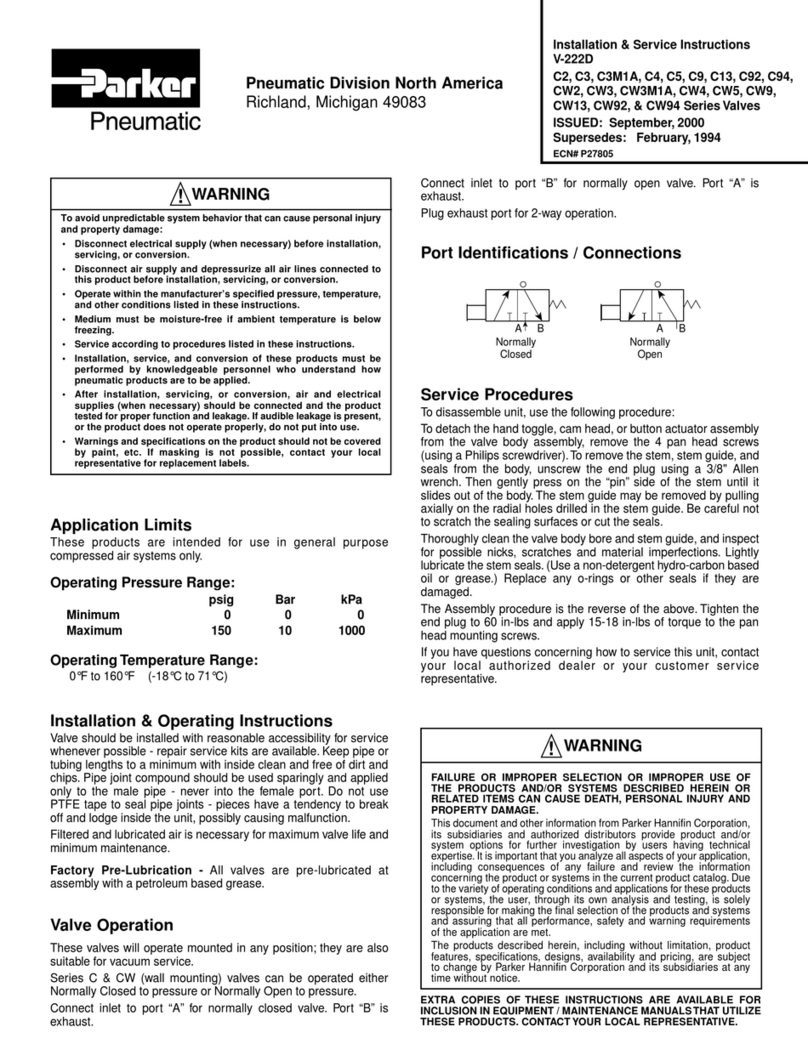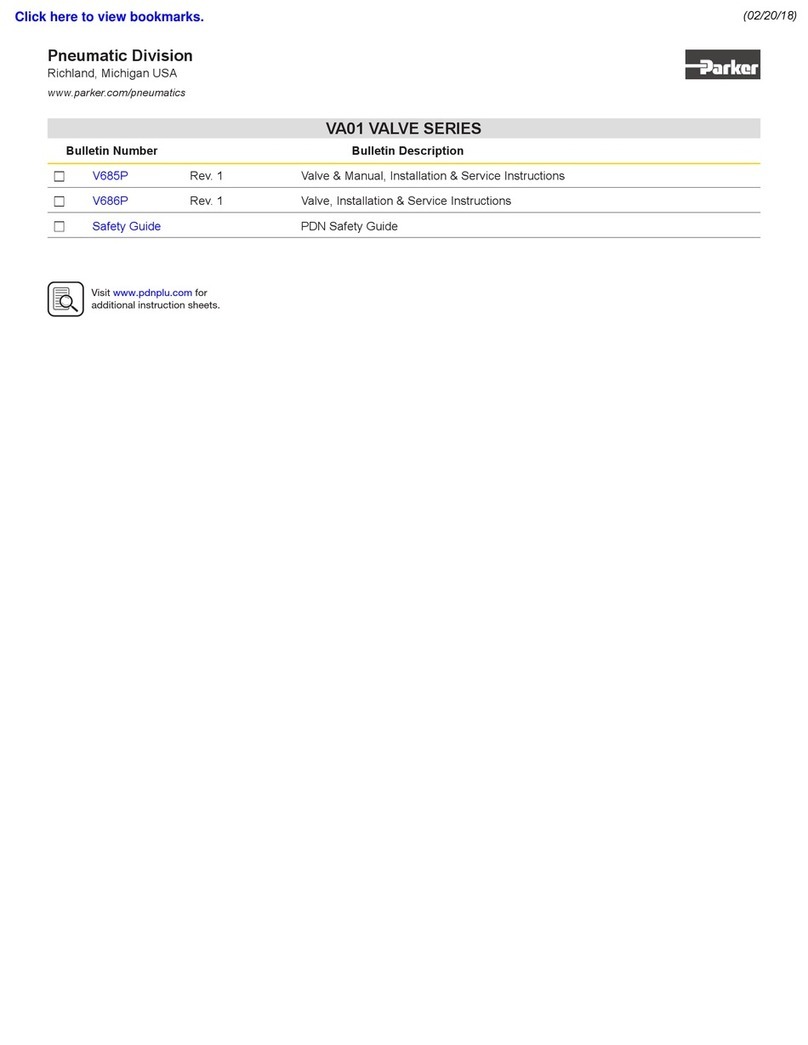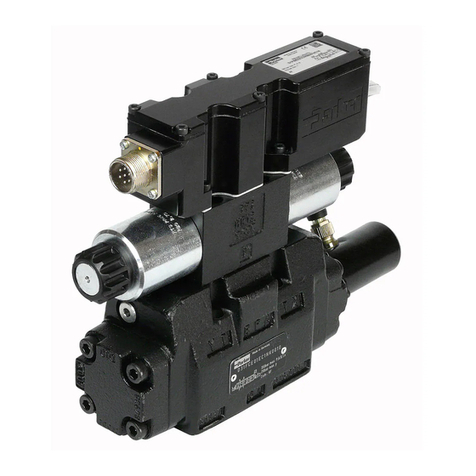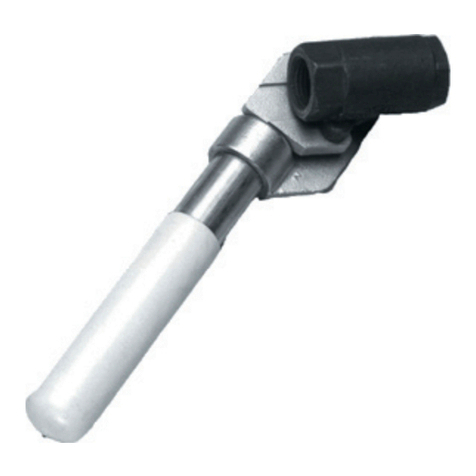
4
Parker Hannifin Corporation • Refrigerating Specialties Division
2445 South 25th Avenue • Broadview, IL 60155-3891 USA
Telephone: (708) 681-6300 • Fax (708) 681-6306
Service
Dirt or other foreign material in the system is the greatest
single cause of valve malfunction.
Before disassembling a check valve for servicing, read and
become familiar with the Safe Operation Instructions in this
bulletin as well as in the current issue of Safety Bulletin RSB.
Check the following chart for possible symptoms and
corrections.
Symptom Probable Reason Correction
Valve does not Dirt or chips Disassemble valve
close or there under valve seat. and clean
is leakage thoroughly.
through valve. Replace any
damaged parts.
Valve chatters. Valve is Replace with
oversized. smaller port size or
use Type CK-1.
Disassembly
Caution - If the valve to be disassembled or removed is
close-coupled to a solenoid operated valve make sure that
the power supply to the valve is de-energized and all
refrigerant is pumped out of the line. Refer to Page 3 as
necessary.After removing the valve from between the flanges
remove the parts in the numerical order shown in the
applicable exploded view. In all CK4A Valves the seat plates
with the O-rings are removed by gently tapping out the seat
from the opposite end of the valve body.Use a wooden dowel
for this purpose.
Assembly
Before assembling all parts must be clean, dry and lightly
coated with refrigerant oil. If an existing valve or strainer is
close-coupled to the check valve, either one should be
opened, inspected and cleaned before putting it and the
check valve back in service.
Refer to Page 3 as applicable. Assemble the valve in the
reverse numerical order shown in the exploded view. Make
sure the O-ring is firmly seated and permanently retained by
the seat plate when reassembled.
Warranty
All Refrigerating Specialties products are warranted against
defects in workmanship and materials for a period of one
year from date of shipment from originating factory. This
warranty is in force only when products are properly installed,
field assembled, maintained, and operated in use and service
as specifically stated in Refrigerating Specialties Catalogs
or Bulletins for normal refrigeration applications, unless
otherwise approved in writing by Refrigerating Specialties
Division. Defective products, or parts thereof returned to the
factory with transportation charges prepaid and found to be
defective by factory inspection will be replaced or repaired
at Refrigerating Specialties option, free of charge, F.O.B.
factory. Warranty does not cover products which have been
altered, or repaired in the field; damaged in transit, or have
suffered accidents, misuse, or abuse. Products disabled by
dirt or other foreign substances will not be considered
defective.
THE EXPRESS WARRANTY SET FORTH ABOVE
CONSTITUTES THE ONLY WARRANTY APPLICABLE TO
REFRIGERATINGSPECIALTIES PRODUCTS,ANDISIN LIEU
OF ALL OTHER WARRANTIES, EXPRESSED OR IMPLIED,
WRITTEN OR ORAL, INCLUDING ANY WARRANTY OF
MERCHANTABILITY, OR FITNESS FOR A PARTICULAR
PURPOSE. No employee, agent, dealer or other person is
authorized to give any warranties on behalf of Refrigerating
Specialties, nor to assume, for Refrigerating Specialties, any
other liability in connection with any of its products.
Safe Operation (See also Bulletin RSBCV)
People doing any work on a refrigeration system must be
qualified and completely familiar with the system and the
Refrigerating Specialties Division valves involved, or all other
precautions will be meaningless. This includes reading and
understanding pertinent Refrigerating Specialties Division
product Bulletins, and Safety Bulletin RSBCV prior to
installation or servicing work.
Where cold refrigerant liquid lines are used, it is necessary
that certain precautions be taken to avoid damage which
could result from liquid expansion. Temperature increase in
a piping section full of solid liquid will cause high pressure
due to the expanding liquid which can possibly rupture a
gasket, pipe or valve. All hand valves isolating such sections
should be marked, warning against accidental closing, and
must not be closed until the liquid is removed. Check valves
must never be installed upstream of solenoid valves, or
regulators with electric shut-off, nor should hand valves
upstream of solenoid valves or downstream of check valves
be closed until the liquid has been removed. It is advisable
to properly install relief devices in any section where liquid
expansion could take place.
Avoid all piping or control arrangements which might produce
thermal or pressure shock.
For the protection of people and products, all refrigerant must
be removed from the section to be worked on before a valve,
strainer, or other device is opened or removed.
Flanges with ODS connections are not suitable for ammonia
service.
